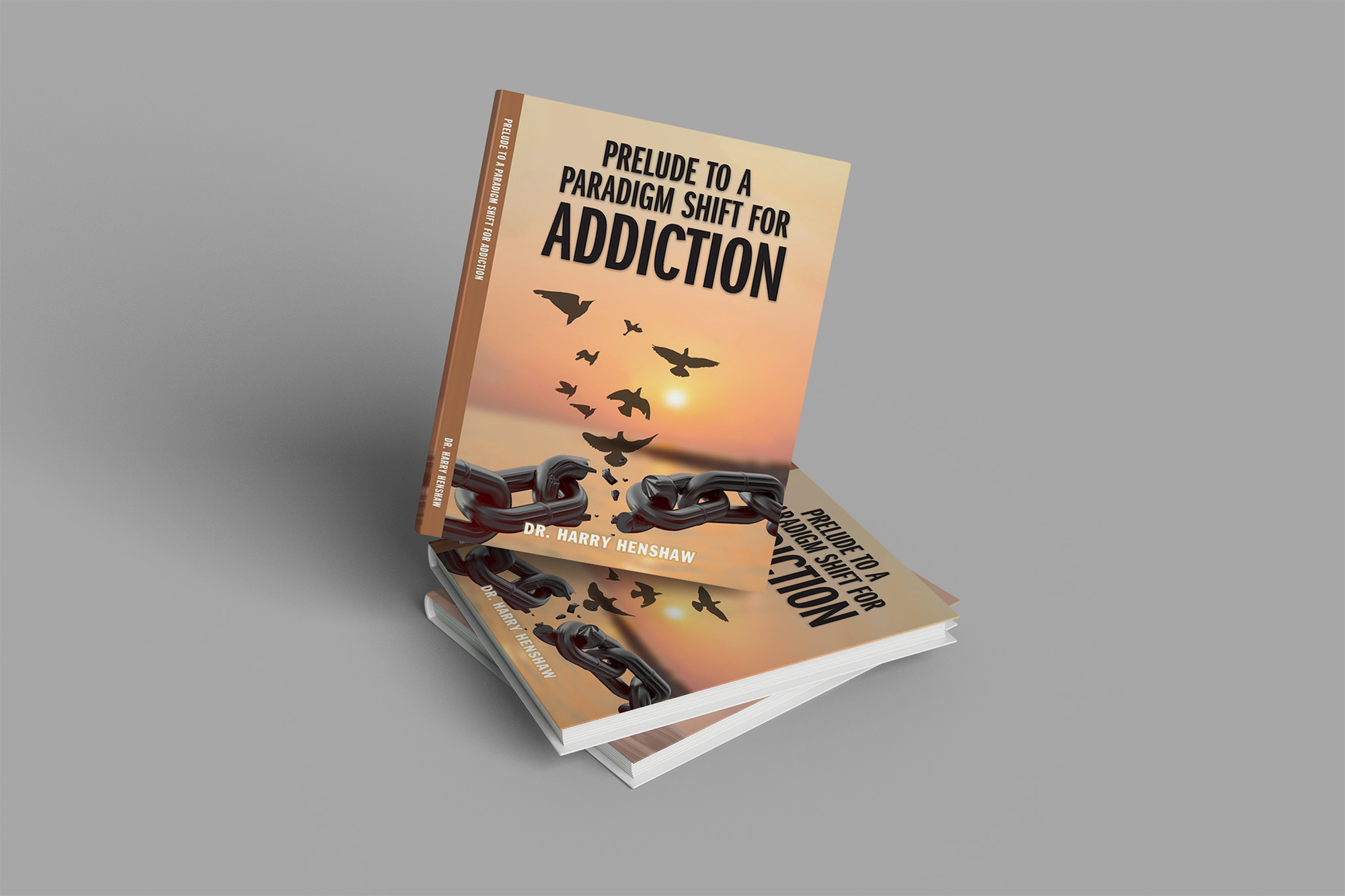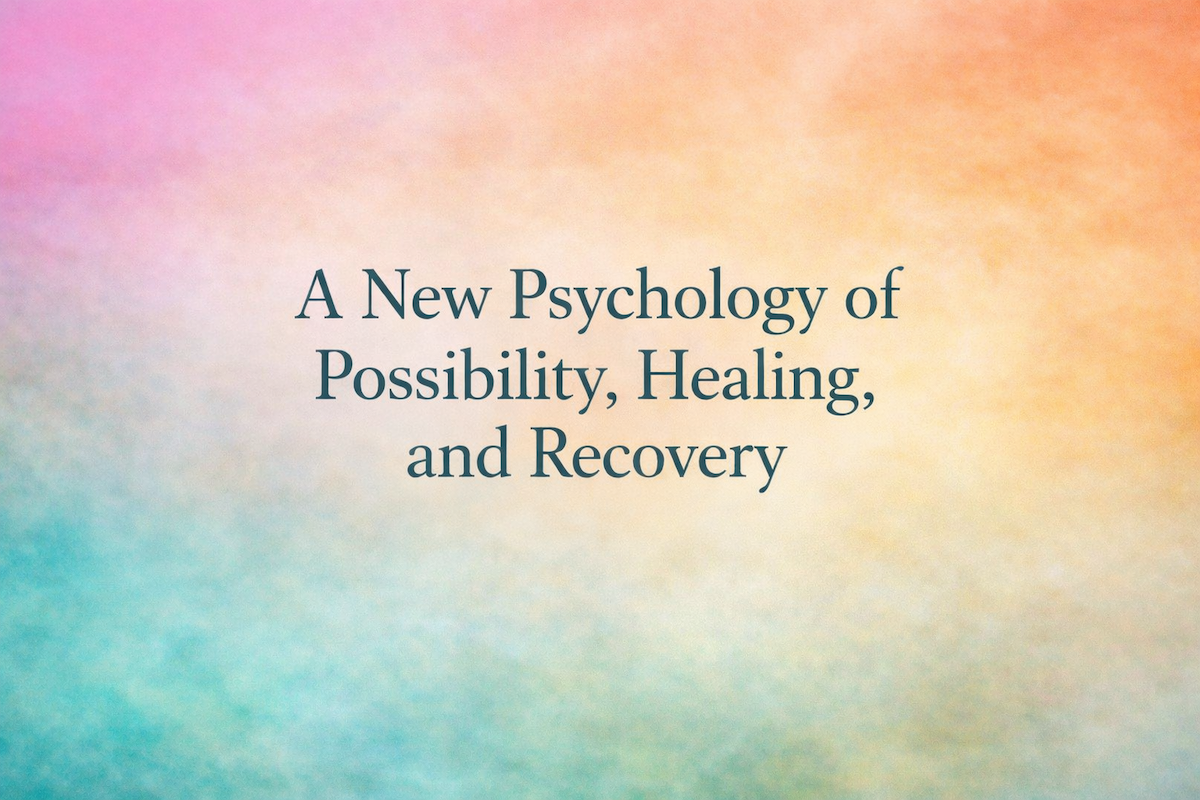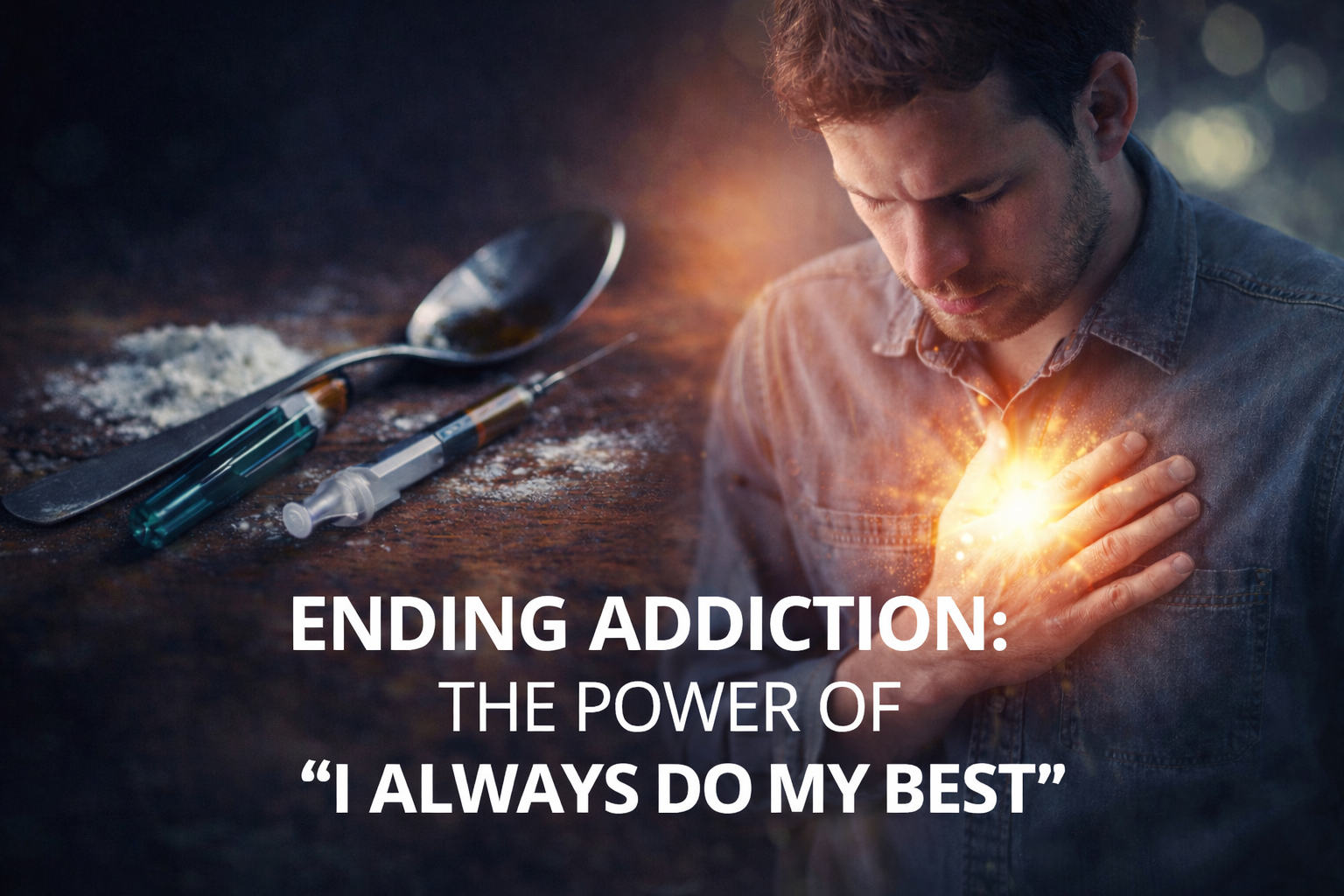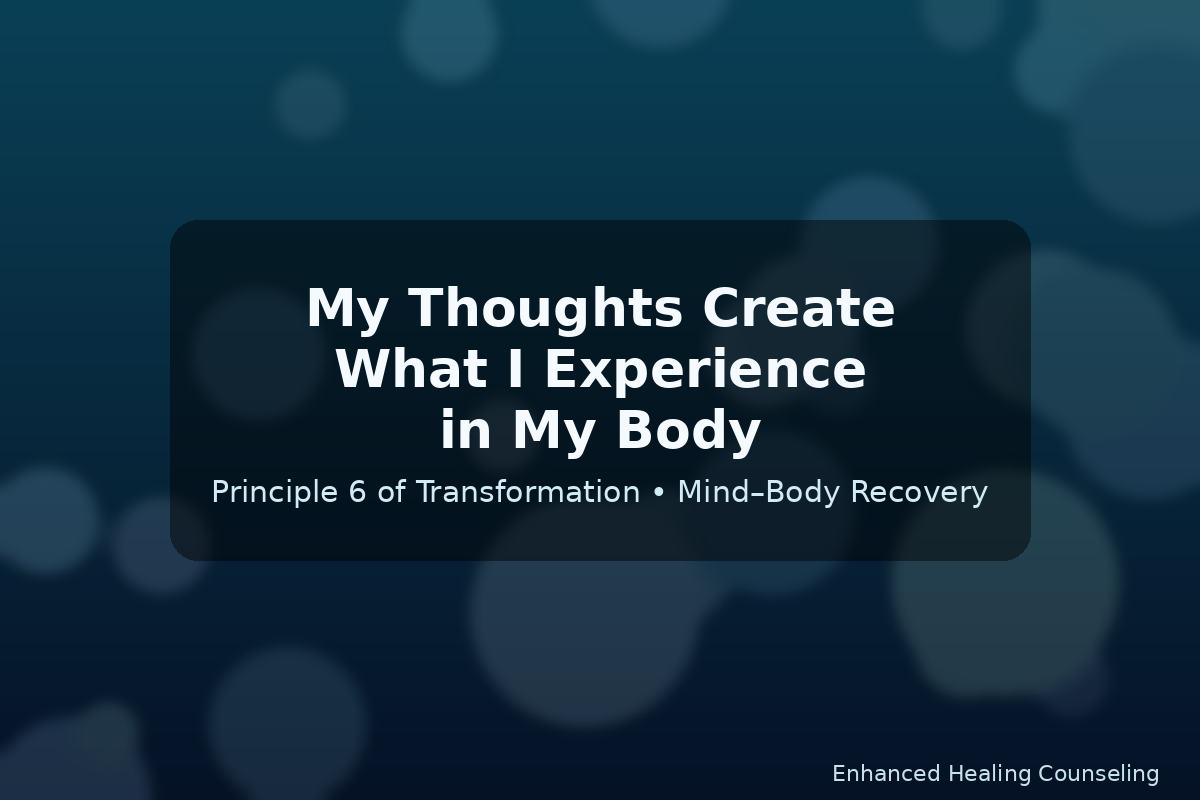Table of Contents
- Why Self-Image Is the True Key to Recovery
- The True Goal of Treatment: Self-Image Transformation
- The Problem: A Negative Self-Image Drives Addiction
- Bringing Thoughts to Light: From Subconscious to Conscious Awareness
- Challenging the Illusion: Emotions Are Not Created by the Body
- Self-Love as the Ultimate Cure
- Resistance Is Part of the Process
- Measuring Progress: The Relationship Between Self-Image and Self-Esteem
- Creating a New Conversation: Bringing Clients Into Their Own Healing
- The Transformational Thought: What If You Loved Yourself?
- From Knowledge to Wisdom: Walking the Path of Healing
- Reprogramming the Subconscious Mind
- Understanding and Embracing Resistance
- The Daily Health Plan: Structuring Transformation
- Integration Beyond Treatment
- Conclusion: A New Hope for Recovery
Why Self-Image Is the True Key to Recovery
Chapter Five of Prelude to a Paradigm Shift for Addiction outlines the most critical phase of addiction recovery: transformation of the self-image. It presents a revolutionary departure from outdated models of treatment that focus on abstinence, pharmacology, or symptom suppression. Instead, it introduces a path grounded in self-love, self-responsibility, and profound psychological reprogramming.
Addiction is not fundamentally about substances. It is about how individuals see themselves — their identity, self-worth, and belief systems. Healing addiction is not a matter of fighting off cravings; it is a matter of rebuilding how one thinks and feels about themselves. In this blog article, we explore the solution to addiction offered in Chapter Five: the transformation of negative self-image into one of wholeness, worthiness, and love.
The True Goal of Treatment: Self-Image Transformation
Traditional treatment models focus on reducing symptoms or achieving abstinence. While these are important milestones, they are not the destination. Chapter Five makes it abundantly clear: the real goal of treatment is to transform a person’s self-image from fundamentally negative to undeniably positive.
This transformation is not about ego or delusion. It is about discovering and believing the truth: you are already perfect, whole, and complete. When individuals internalize this truth, the desire to numb or destroy themselves with drugs and alcohol disappears. The demand evaporates because the root — the toxic belief that “I am not enough” — has been healed.
The Problem: A Negative Self-Image Drives Addiction
Most people with substance use disorders hold deeply painful beliefs about themselves:
- “I am not good enough.”
- “I don’t matter.”
- “I am defective or broken.”
These thoughts create emotional pain, which in turn drives the behavior of addiction. Drugs and alcohol offer a temporary escape from that pain. But the real solution is not in the substance — it’s in changing the thoughts that cause the pain.
Once a person starts to believe they matter, that they are worthy of love and respect, the drive to escape disappears. Healing begins. Transformation begins.
Bringing Thoughts to Light: From Subconscious to Conscious Awareness
Many addicts and alcoholics are not fully aware of their thinking patterns. They feel the pain of negative beliefs — through depression, anxiety, fear — but they don’t realize these feelings are caused by thoughts. Instead, they blame external factors, or believe their body is generating the emotions.
One of the foundational aspects of treatment in this new paradigm is bringing those hidden thoughts into awareness. When clients learn that their thinking creates their feelings, a new possibility opens up: they can change their thoughts and, in doing so, change their lives.
Challenging the Illusion: Emotions Are Not Created by the Body
Many believe that emotions originate in the body. Because feelings like sadness or anger are physically felt, it seems logical to assume the body is the cause. This leads individuals to believe they need physical solutions — pills, drugs, alcohol — to manage emotional states.
This is a tragic misunderstanding. Emotions are created in the mind. They are the body’s response to thoughts.
Understanding this is revolutionary. It reveals the real solution is not chemical or physical — it is cognitive. When you change your thoughts, you change your feelings. When you change your feelings, your behavior transforms.
Self-Love as the Ultimate Cure
The cornerstone of recovery is coming to believe, as Louise Hay so beautifully stated: “I am perfect, whole, and complete.”
When this belief replaces the inner critic, the addict or alcoholic no longer needs to escape themselves. Their inner life becomes a place of peace instead of pain. This is the true power of self-love — it dissolves the need for self-harm.
Resistance Is Part of the Process
Change is hard. And for many addicts and alcoholics, this internal work feels unfamiliar and threatening. Chapter Five acknowledges that resistance — to taking responsibility, to questioning old beliefs, to embracing new ideas — is not only normal, it’s necessary.
The key is to work through resistance, not around it. When addressed directly, resistance becomes the gateway to transformation. It is evidence that old beliefs are being challenged, and that a new identity is trying to emerge.
Measuring Progress: The Relationship Between Self-Image and Self-Esteem
Self-image is how one thinks about themselves. Self-esteem is how those thoughts make them feel.
In treatment, we track self-esteem as a way to measure progress. When a client’s self-image becomes more positive, their feelings about themselves improve. They begin to:
- Treat their body with respect
- Speak to themselves with kindness
- Build healthier relationships
- Make choices aligned with their wellbeing
This is how we know the treatment is working — not just because they’re sober, but because they’re thriving.
Creating a New Conversation: Bringing Clients Into Their Own Healing
The new paradigm shifts the therapeutic conversation. We are no longer asking, “What happened to you?” but “What do you believe about yourself?”
This internal focus empowers clients to stop seeing themselves as victims of circumstances or biology, and start seeing themselves as creators of their experience. This conversation is not about blame — it is about freedom.
And the turning point often comes when a client realizes: I’ve been using drugs to punish or destroy myself. That realization, as painful as it is, opens the door to a radically new future.
The Transformational Thought: What If You Loved Yourself?
At the heart of Chapter Five is a simple but powerful question: If you truly loved yourself, would you use drugs and alcohol?
This question, introduced as part of the therapeutic process, breaks through denial and opens the client’s mind to new insight. It becomes harder to justify self-destruction when faced with this truth.
Once the idea takes root — even if it’s initially rejected — it begins working within the client’s consciousness. Slowly, they begin to see that self-love and addiction cannot coexist. And that transformation is not only possible — it is inevitable.
From Knowledge to Wisdom: Walking the Path of Healing
There is a profound difference between knowing something and living it.
- Knowledge is learning the principles of healing — self-love, responsibility, the power of thought.
- Wisdom is applying those principles to daily life.
In this model, recovery is not about passively receiving treatment. It is about active engagement with both learning and living. Clients read, reflect, journal, engage in dialogue, and most importantly, act on what they learn.
As Dan Millman said, knowing how to clean a windshield is knowledge. Cleaning it is wisdom.
Reprogramming the Subconscious Mind
Most of our self-limiting beliefs exist in the subconscious mind. This is where the inner programming — the self-image — is stored. To truly transform, we must not only address the conscious mind but reprogram the subconscious.
This is done through:
- Repetition of affirmations
- Guided imagery and relaxation music
- Mirror work
- Daily health practices
These tools help the new belief system take root. Over time, the subconscious mind begins to support — rather than sabotage — the healing process.
Understanding and Embracing Resistance
Resistance isn’t just a block — it’s feedback. It shows us where the old programming is fighting to survive. But it also confirms we are moving in the right direction.
In this new paradigm, resistance is not feared. It is welcomed. It is used as a teacher. When we lean into resistance with compassion and courage, we accelerate growth.
The Daily Health Plan: Structuring Transformation
Knowledge and intention are not enough. Clients need structure — a Daily Health Plan — to help implement change.
This plan includes:
- Morning affirmations
- Positive action steps
- Self-care rituals
- Accountability check-ins
The Daily Health Plan becomes the backbone of the client’s healing process. It reinforces commitment, builds discipline, and bridges the gap between treatment and daily life.
Napoleon Hill put it simply: Plan your work, and work your plan.
Integration Beyond Treatment
One of the most powerful aspects of the new paradigm is its sustainability. The tools clients learn are not limited to the treatment setting. They can be used for life.
- Affirmations can be repeated daily.
- Mirror work can continue at home.
- Thought awareness can become second nature.
- The Daily Health Plan can evolve with the client.
Transformation doesn’t end at discharge — it begins there.
Conclusion: A New Hope for Recovery
Chapter Five of Prelude to a Paradigm Shift for Addiction is a beacon of hope for those struggling with addiction and for the professionals seeking a better way to help.
The core message is clear: you are not broken. You are not powerless. And you are not without hope.
Addiction is not about substances. It is about pain. And that pain is caused by a lie: that you are not enough.
The cure is not just sobriety. The cure is truth — the truth that you are already enough. When you believe that, everything changes.
This is the promise of the new paradigm. Not just relief, but transformation. Not just abstinence, but wholeness. Not just surviving, but thriving.
Let this chapter — and this philosophy — be a turning point. For you. For your loved ones. For the future of addiction treatment.
Dr. Harry Henshaw is the creator of Enhanced Healing Counseling and the author of “Prelude to a Paradigm Shift for Addiction.” To learn more about his holistic recovery approach, therapeutic music, and counseling services, visit Enhanced Healing.
Dr. Harry Henshaw

Get Free from Addiction!
Discover a groundbreaking perspective on addiction recovery. Click below to buy Prelude to a Paradigm Shift for Addiction and explore innovative solutions to transform the way we understand and treat substance use disorders.
About Enhanced Healing
Enhanced Healing Counseling specializes in addiction recovery, mental health, and self-esteem support. Offering online and in-person services, we empower individuals to transform their lives with personalized care and proven therapeutic methods.




